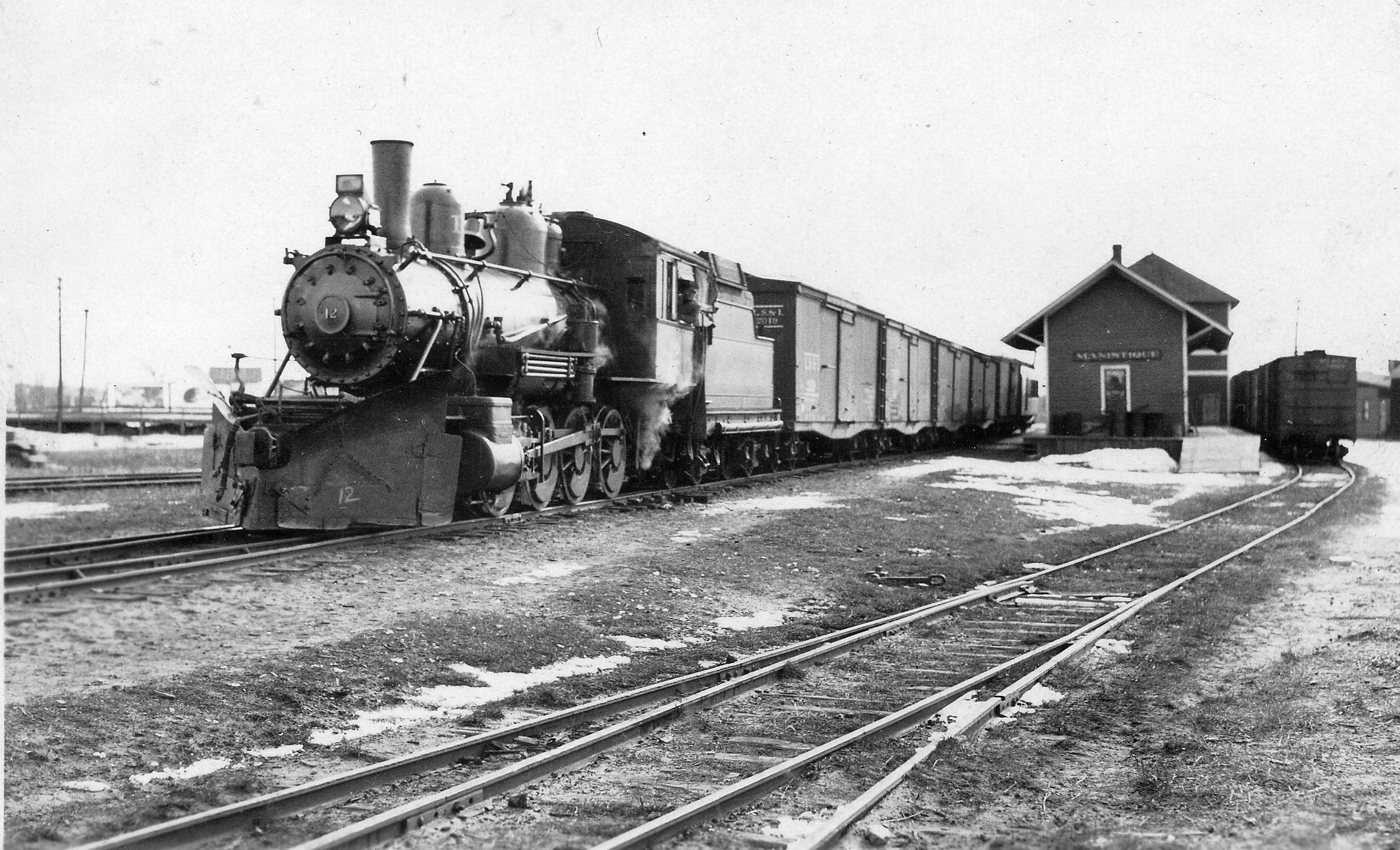
Engine No. 12, March 1932 Image. This locomotive was later renumbered 2370 and was destroyed in the roundhouse fire of 1952. It was scrapped in 1953. (Niles/Helmka Family Collection)
Early History
Construction of the railroad line between South Manistique and Shingleton was completed in 1898 and was then known as the Manistique and Northwestern Railroad (M&NW). Passenger service from Manistique to Shingleton began on January 1, 1899 with a one-way fare costing $1.35. In 1902 the line became part of a new railroad known as the Manistique, Marquette and Northern (MM&N) offering passenger service between Manistique and Marquette. During 1907, the company relocated the railroad’s roundhouse and shop buildings from South Manistique to Manistique north of its Deer Street depot and offices. The company was reorganized yet another time in July of 1908 and briefly became known as the Manistique & Northern Railroad (M & N).
